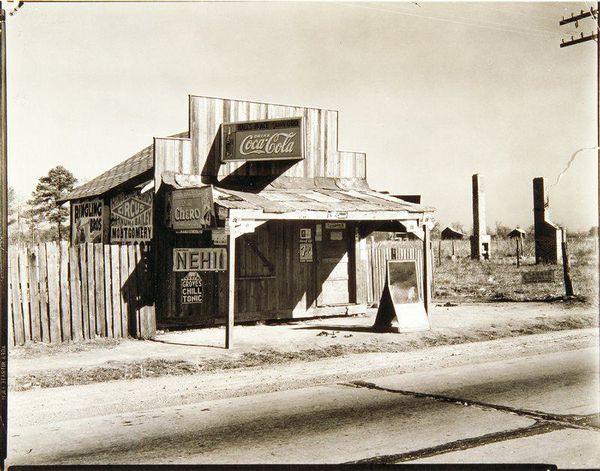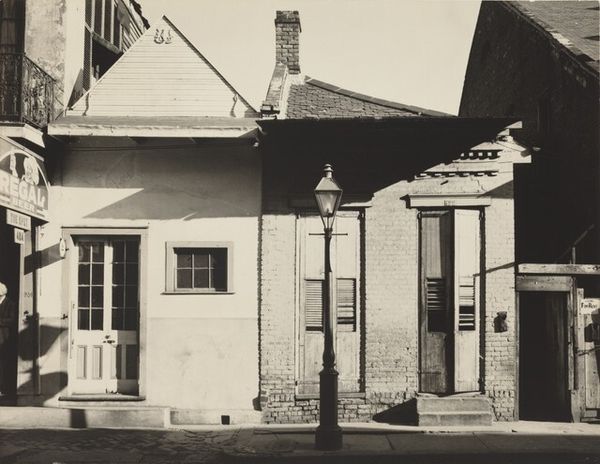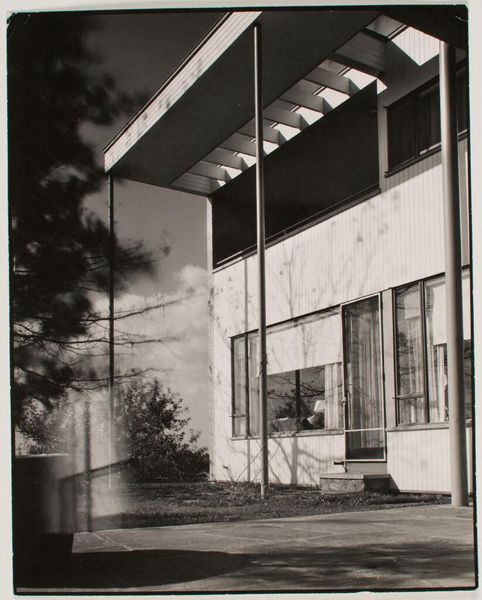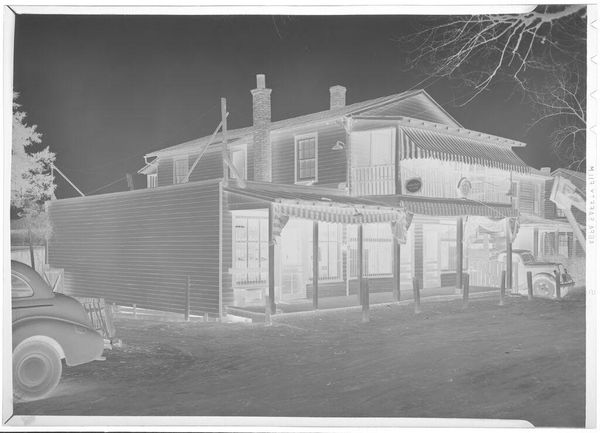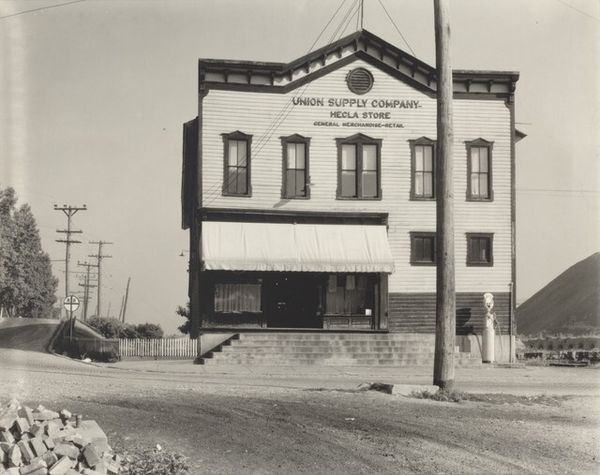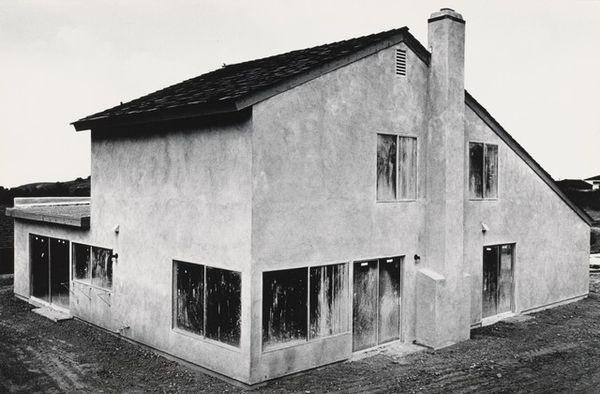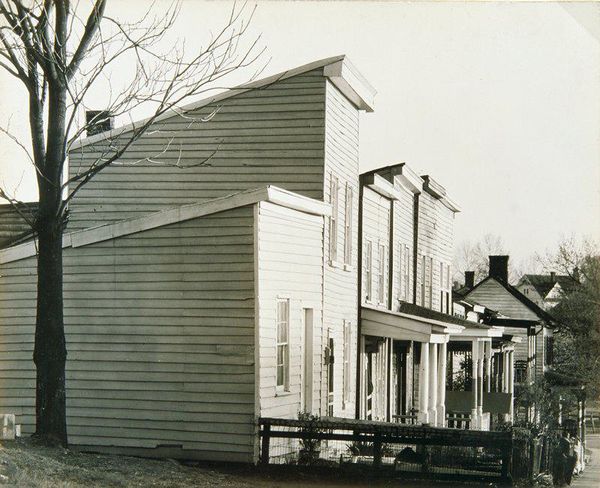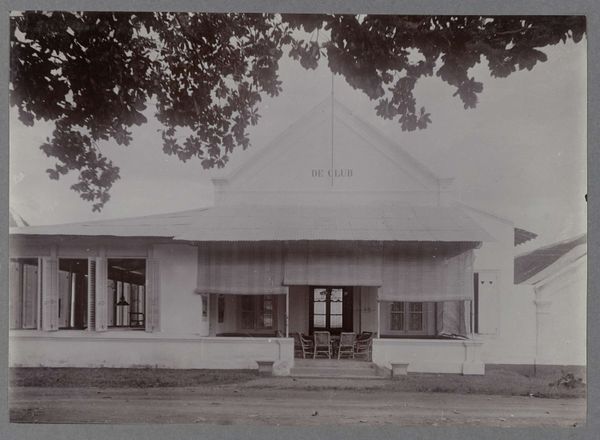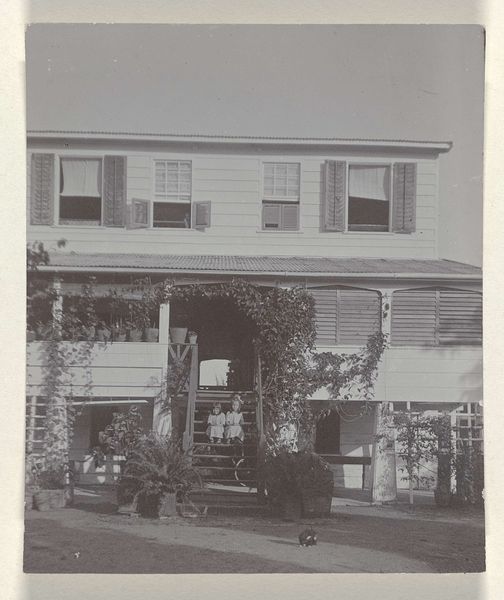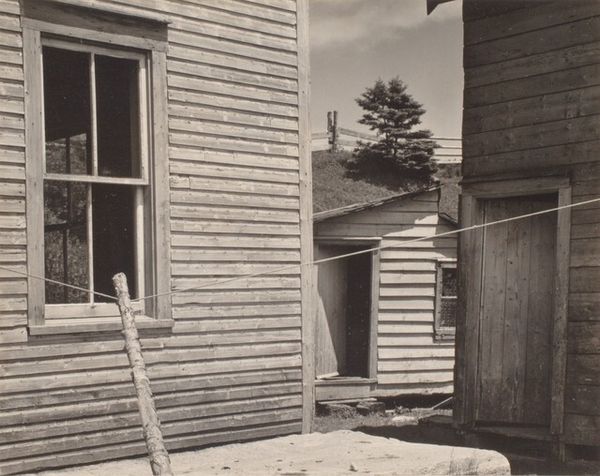
plein-air, photography, site-specific, gelatin-silver-print, architecture
#
portrait
#
architectural landscape
#
plein-air
#
landscape
#
historic architecture
#
street-photography
#
traditional architecture
#
photography
#
site-specific
#
gelatin-silver-print
#
monochrome photography
#
ashcan-school
#
modernism
#
architecture
#
realism
#
historical building
#
monochrome
Dimensions: image/sheet: 12.6 × 24 cm (4 15/16 × 9 7/16 in.)
Copyright: National Gallery of Art: CC0 1.0
Editor: This is Walker Evans' "Country Store and Gas Station," taken in 1936. The gelatin silver print presents such a stark, almost confrontational view of rural America. I'm really struck by the building's facade - how would you interpret this work, especially in terms of its symbolic weight? Curator: The severe façade, the unadorned lettering, even the posture of the figures...all these contribute to an iconography of resilience. It evokes the stoicism and resourcefulness ingrained in rural communities during the Depression era. Do you notice how the gas pumps are positioned almost like sentinels, guarding not just fuel, but also a fading way of life? Editor: That's a great point! It's as if they're symbols of both connection to the modern world and vulnerability to its whims. I see those gas pumps standing to attention. There is this memory, something looming from the past, something these men witnessed, that they remember now. Curator: Indeed, Evans masterfully captured the moment where old and new ways converge. The store becomes a microcosm of larger societal shifts, the vernacular architecture and signage acting as carriers of cultural memory, of that sense of being caught between eras. Think about the repeated lines – in the corrugated iron, the planks, even the stances of the figures. What emotions do they evoke in you? Editor: Now that you point it out, this stark repetition creates a sense of rhythm and a visual anchor. But also the posters hanging slightly akimbo suggesting a lack of upkeep or being caught between those ways of life like you mentioned before. Thanks, that really broadened my perspective. Curator: And in turn, you helped me recognize the building, not as a singular point, but as a meeting point, almost like an intersection for society's own identity.
Comments
No comments
Be the first to comment and join the conversation on the ultimate creative platform.
